Mobility is defined as “the ability to move freely or be moved easily” according to the Cambridge dictionary. Many of our clients have come to us wanting physiotherapy services to increase their mobility ie. increase their ability to walk or get around in the community. Having good mobility enables one to be more active and enjoy social interactions with friends and family outside the home environment, hence it is important that we remain as mobile as we can.
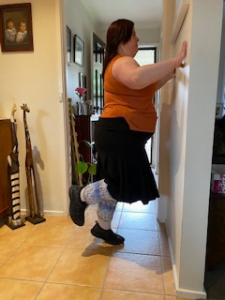
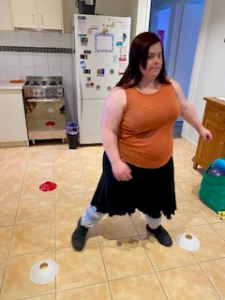
Physiotherapists can help increase or improve one’s mobility in the following 5 ways:
1. Prescribing strengthening exercises
2. Endurance training
3. Gait retraining
4. Balance and falls prevention
5. Prescribing assistive technology
- Strengthening Exercises
In order to walk around freely, we need to have good muscle strength so as to support the weight of our body, as well as moving it from place to place. Physiotherapists can identify muscle weakness and tailor an exercise program specific to individual needs. Strengthening exercises are often prescribed as a starting point to build the foundation for our muscles to be able to hold or move specific body segments in a certain position first, before progressing the exercises to start moving multiple body segments.
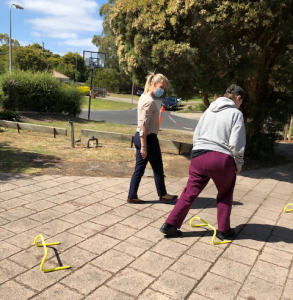
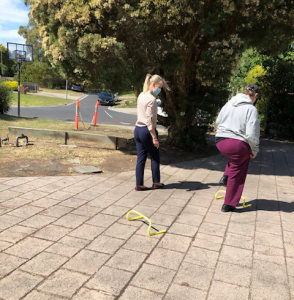
- Endurance Exercises
As we get stronger in our muscles, we need to build endurance so that we can sustain longer periods of walking or physical activity. Endurance is the body’s ability to maintain physical activity for an extended period of time. Examples of endurance activities include hiking, cycling or swimming. To train endurance, physiotherapists will start to increase the repetitions of certain exercises in the strengthening program to train the body in tolerating movement over longer periods of time.
- Gait Retraining
Gait refers to the style or manner of walking. Physiotherapists are skilled in analysing gait patterns and identify any abnormalities which may need to be addressed so that we can be more efficient in the way we walk and also reduce the strain on other body parts if we were to continue walking in an abnormal manner. Gait retraining usually involves strengthening and endurance exercises at the initial stage to get our muscles strong and build tolerance to movement first, then correcting and practicing specific components of the gait pattern that are abnormal. Sometimes, this may involve the use of devices such as a splint or walking stick if the abnormal component of gait can’t be resolved by exercises.
- Balance and Falls Prevention
When we are walking, we need to ensure we have good balance so that we don’t trip or fall. Balance is the ability to control your body position when standing or moving. Even if someone were to accidentally push into us, having good balance can prevent us from falling over if we could react fast enough to maintain our upright position. Physiotherapists are trained professionals who teach balance and falls prevention strategies so that our body has the ability to activate the appropriate muscles at the right time, with the correct amount of force required for the task in a particular situation.
- Assistive Technology (AT).
AT refers to devices or equipment that help maintain or improve an individual’s mobility. Examples of AT items are walking frames, wheelchairs, ankle-foot orthoses, braces etc. Physiotherapists can assess and prescribe AT equipment to improve mobility if the lack of mobility can’t be resolved with exercises, for example having a permanently weaker side after a stroke.
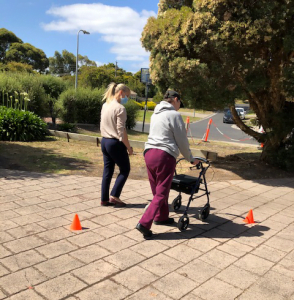
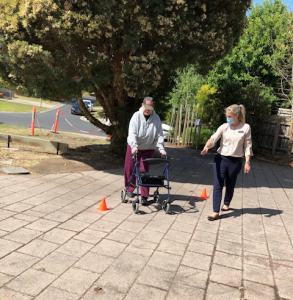
Let’s have a look at a case study now to see how the above methods can be applied in a real-life scenario:
Mr. X had a stroke 20 years ago with a residual weaker right side and had been referred to us for physiotherapy services to improve his mobility. Upon assessment by the physiotherapist, he was identified to have difficulty standing from his bed and walking to the bathroom due to various reasons:
- Incorrect technique in standing up from his bed
- Weakness on right side of his body
- Locking of his weaker right knee into hyperextension when he walks, resulting in a jerky gait pattern
- Excessive leaning over to the unaffected left side when walking with a 4-prong walking stick
To improve Mr. X’s mobility, the physiotherapist has to work on the above issues. He taught Mr. X the correct foot placement and forward body lean when preparing to stand from the bed, which makes it much easier for Mr. X to stand. Once Mr. X applies the correct technique to stand, he then repeatedly practices this sitting-to-standing movement, which is a form of strengthening exercise for his lower limbs and increasing the repetitions makes it a form of endurance training. As Mr. X had his stroke over 20 years ago, it is not expected that he will make any significant improvement in strength on the weaker right side of his body. Prescription of a knee brace ie AT device by the physiotherapist to prevent Mr. X from locking his right knee into hyperextension will assist in improving his gait pattern so that Mr. X is able to walk with smoother movements. This will also improve the amount of weight going through the right leg and reduce the amount of leaning of his body to the left side. Mr. X then practices walking ie. gait retraining with the above strategies and devices in place. Once he is more confident in his improved walking pattern, the physiotherapist can add on balance exercises to increase Mr. X’s stability when walking, so that it reduces his chances of falling ie falls prevention.
Hopefully, the above information has been useful in giving you an insight into how physiotherapy can help in improving mobility. Please feel free to contact our friendly customer service team if you feel you need our physiotherapists to help you in achieving your mobility goals.
If you are ready to make a physiotherapy referral please click here.
By Elaine
Physiotherapist and Team Leader NSW



